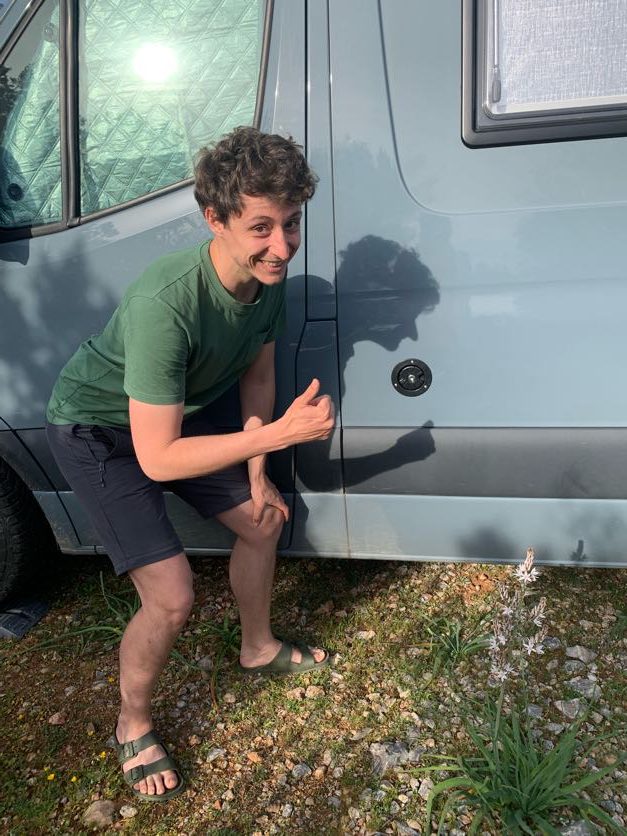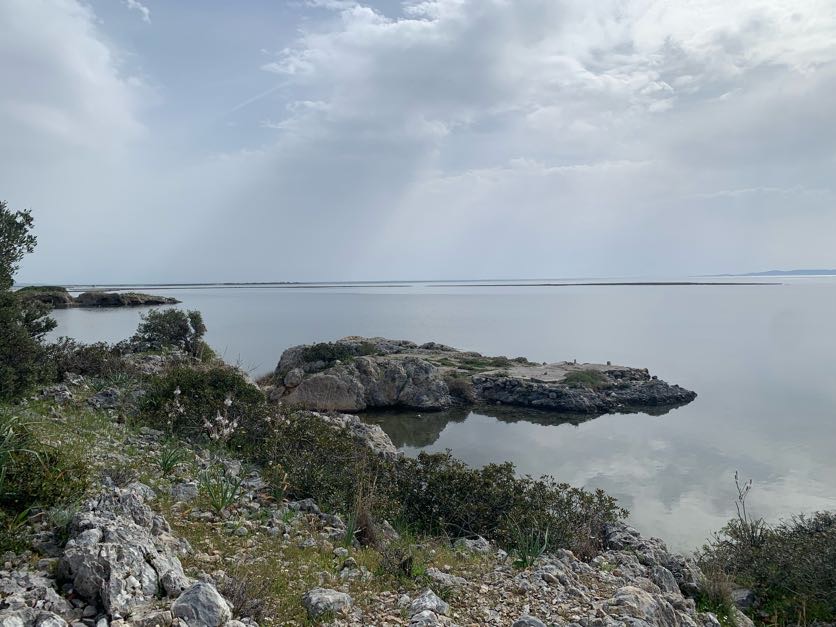Pergamon
Day 19 of our journey brings us to another highlight of our journey along the Turkish Aegean coast: Pergamon, the ancient city where parchment (German: Pergament) was invented.
The founding of the city was a fortunate coincidence and the result of Alexander the Great’s conquest. His lieutenant Lysimachos left his enormous fortune of about 1.8 tons of silver in the city while fighting against the Syrian king Seleukos. Unfortunately for Lysimachos, he died in the process, and fortunately for the Pergamese, left his eunuch, Philetairos, with a large starting capital to expand the city. Philetairos’f heirs over many generations built it into an empire and later allied themselves with Rome. The last king of Pergamon, Attalos III, having no heirs, bequeathed the entire kingdom to Rome, making the most populous and wealthiest region of the known world an important part of the Roman Empire: the province of Asia. This only increased the wealth and population of the city.
We spend a couple of hours on the Akropolis of Pergamon and are amazed by the size and sheer scale of the Areal of Athena, the theatre built on the steep slope of the mountain to which the city clings. The remains of the altar of Zeus are less impressive. The original friezes have long since been transported to Berlin, where they are on display in the Pergamon Museum (which we visited a few years ago, but which is currently closed for renovation).
After a short lunch in the small village of Bergama at the foot of the mountain, we briefly visit another important site, the Askleipion of Pergamon. This place was a holy place dedicated to the Greek god of healing and one of the most important healing places of the ancient world, especially during the Roman period: even Roman emperors visited it.
Unfortunately, the site is not only overpriced (like all the sites we have visited so far), but a military barracks has been built right next door. As a result, our visit to one of the most important remnants of antiquity is overshadowed by machine-gun fire. What a cynical way to express one’s appreciation of ancient civilisations.
Izmir
In the afternoon, we drive on to the vibrant and modern heart of the region: Izmir, the third largest and fastest growing city in Turkey, which can also be seen in the evening traffic. We spend two days here. There’s not much to see in the city, but we spend an evening taking in the very western city centre and promenade and enjoy the most expensive beer we’ve ever tasted: around €7.50 for 0.33 l of Efes Pils. There’s no more refreshing way to pay taxes!
We also use the time at the campsite to rearrange the camper. Firstly, it’s already much warmer and we can pack away our winter clothes. Secondly, after 3 weeks of travelling, we now know better what and which parts of the camper we need to access regularly and which processes still need to be optimised. We’ve now also retrofitted a water filler neck for the fresh water. Previously, we always had to fill up the water in the interior, which always required two people. We thought we could save ourselves the money and effort for a filler neck, but now we realise that this is a clear and quality of life improvement.

Ephesus
Ephesus – another of the world’s most important ancient sites: Ephesus was a cosmopolitan city when Athens was still a province and Rome had not yet been founded. At one time it was home to a quarter of a million people, an unimaginable number in those days. Today, however, 15,000 tourists visit the site on peak days in the summer, and the state is picking the pockets of foreign tourists even more shamelessly than before: €40 just for the site, but that doesn’t include the museum on the site or the terraced houses. And at the moment you can’t even visit the Great Theatre, which could seat up to 24,000 spectators, as it is being renovated. In constrast, the Archaeological Museum in the nearby town of Selçuk is almost a real bargain (€10). To be fair, the artefacts on display from the city’s excavations are impressive and a testament to the city’s long and rich history. What’s more, we have the museum pretty much to ourselves, as most people would rather have their photo taken in front of the (admittedly impressively restored) Celsus Library for €40. Crowds, oppressive heat, headaches and a panting dog soon drive us from the site back to the bus.
Delik National Park
We drive a good hour further south to Dilek National Park. Here we enjoy a dip in the cool sea and spend a mostly quiet night – although we are not sure if we heard jackals howling or if it was just dogs. The next day we want to rest and spend another night, but are kindly informed by the police that camping is not allowed. What a shame, for once there were no stray dogs! In the afternoon we continue along the coast towards Didyma.
